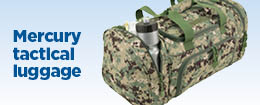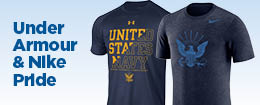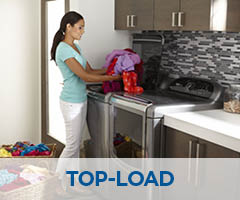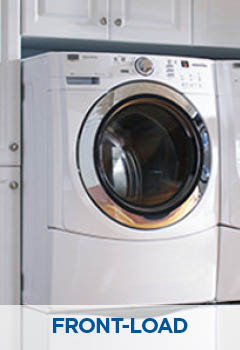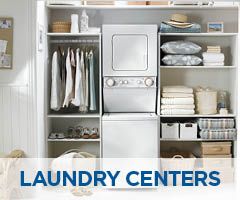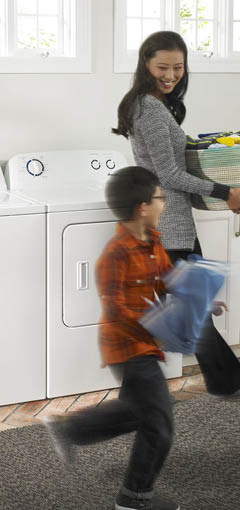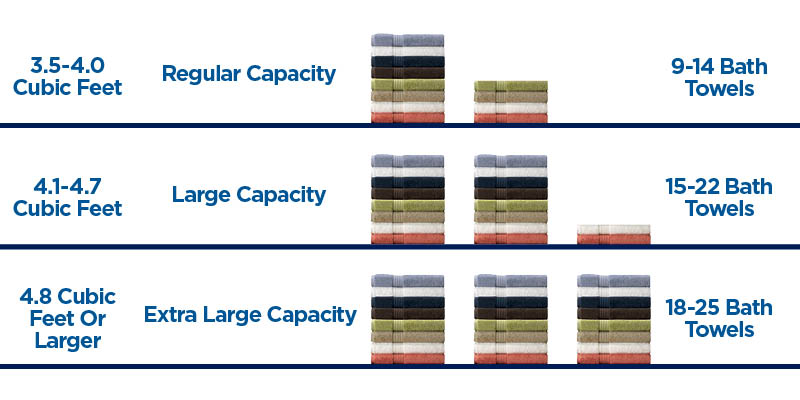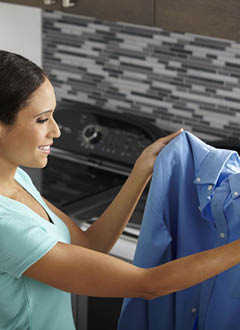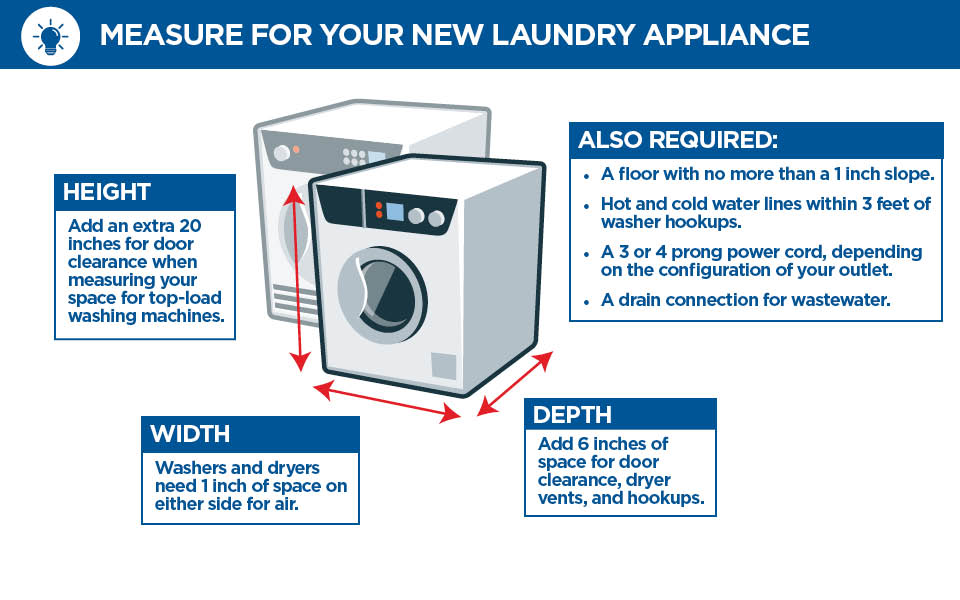Anti-allergy Cycle - Target dust mites, pet dander, and other common household allergens that can irritate sensitive skin by washing clothes using the anti-allergy cycle.
Antimicrobial - Technology developed to sanitize fabrics without hot water or bleach.
Automatic Dispensers - Dispenses bleach, detergent, and fabric softener release their respective products at just the right time during the washing cycle.
Built-In Sink - A built-in sink with scrubbing board and integrated water jet allows you to easily pre-treat and hand wash your laundry.
Bulky Setting - Useful when washing meant for large items such as blankets, comforters, and sleeping bags. A bulky setting soaks items first to maintain the load balance.
Child Safety Lock - Locks the washer door to prevent children from opening during a spin cycle.
Darks/Colors Cycle - Clean dark or brightly colored fabrics without fading them.
Extra Rinse - This cycle helps remove detergent residue that can irritate delicate skin.
Heavy-duty cycles - Engineered for cleaning sturdy items, such as jeans and towels, or extra dirty laundry.
Noise-Reduction - Some models are designed to reduce vibration and noise, which is especially important if your laundry area is near a bedroom or living room.
Quick Wash - A quick-wash, rapid-wash or speed-wash setting is perfect for when you need to wash a garment in about 30 minutes.
Sanitary Cycle - By boosting water temperatures, the sanitary cycle removes stains and kills germs.
Stainless Steel Tub - A high-quality tub won't rust if it's chipped and withstand high spin speeds.
Steam - A steam cycle works on tough stains, freeing you from pretreating laundry. Steam also can be used to freshen clothes and remove allergens without going through the entire wash cycle.
Time-Delay - A time-delay feature lets you load the washer and program it to take advantage of lower utility rates or start at a more convenient time.
Touch Pad Controls - Touch pad and touch screen settings are more versatile than dials. They often include customized programs such as dedicated cycles for specific fabrics, four or more water-level settings, and memory settings to remember your favorite cycles.
Warm Rinse - A warm rinse cycle speeds up the drying cycle by leaving clothes warm after washing.
Quick Tip!
Consider a matching washer/dryer set. It’s not only aesthetically pleasing, many washer and dryer sets are actually engineered to work together. Factors like spin speed mean reduced drying time and your matching dryer will feature special cycles and sensors to accommodate the function, ensuring clothes are never over-dried, making them last longer.
Eco Cycle - This cycle significantly decreases energy use by accurately monitoring clothes' dryness. Some models even have a monitor on their console that displays the energy use and efficiency of different drying cycles. A dryer with an eco cycle can use less energy when you pair it with a matching washer, compared to a conventional top-load pair.
Express Dry - This dry cycle uses large blowers for increased airflow so laundry dries faster.
Delicate - This cycle uses an ultra-low temperature to safely and gently dry lightweight garments and loosely woven fabrics. Your clothes will last longer and keep their color longer if you use the correct temperatures.
Post-Dry Tumbling - Drum tumbles every few minutes after the clothes are dry to keep them wrinkle-free until they are removed from the dryer.
Quiet Touch - If your laundry room is close to living areas, consider one that offers quiet operating levels.
Sanitation - A dryer with a sanitizing cycle will increase the temperature or use steam to reduce germs, bacteria and irritants in your clothing and bedding.
Sensor Dry - A moisture sensor knows how wet your laundry is and adjusts the drying time according to your preference of damp or completely dry. This saves time and money on energy costs and prevents overdrying to extend the life of clothes.
Stainless Steel Drums - More durable than plastic or porcelain drums and won’t chip, crack or scratch. They also handle longer drying cycles better.
Steam - Steam cycles can refresh an outfit, relaxing wrinkles and removing odors. During this cycle, a small amount of water sprays into the dryer drum after several minutes of tumbling with heat. Some dryers come with settings to periodically tumble, rearrange and fluff the load, keeping wrinkles from forming. The setting is adjustable based on the number of garments in the dryer.



 MAIN MENU
MAIN MENU
